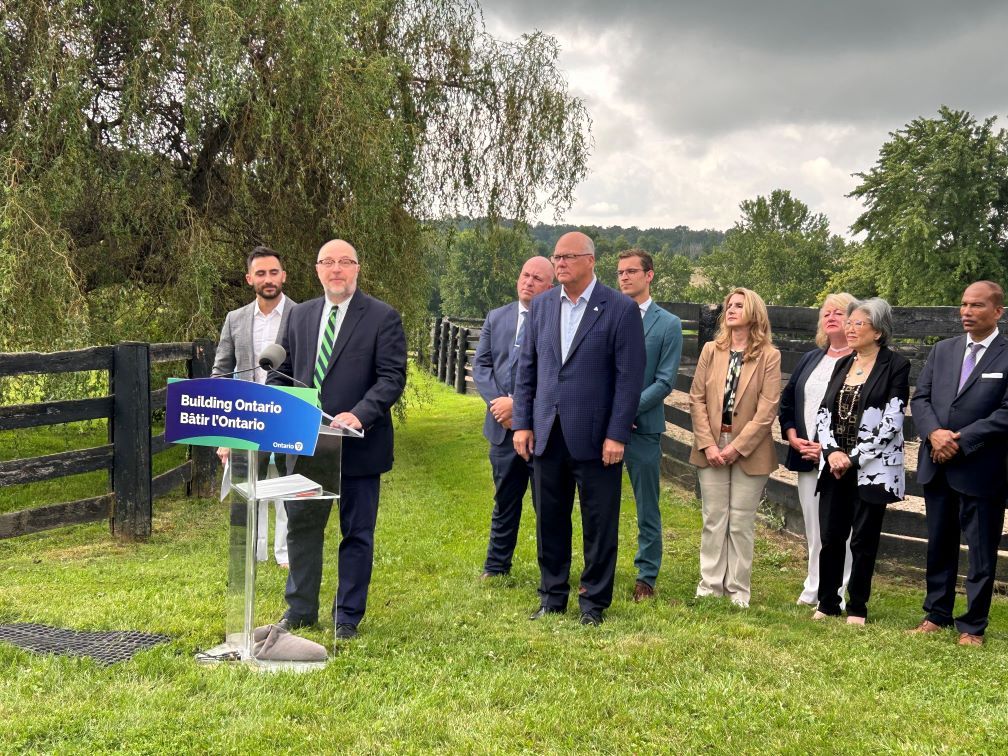Ontario launches energy procurement, bans solar on prime agricultural land


Ground-mounted solar projects banned in prime agricultural areas in Ontario

Ontario has implemented a ban on ground-mounted solar projects in prime agricultural areas, as well as a prohibition on building such projects in specialty crops areas. These measures aim to strike a balance between the province’s energy needs and the needs of its farmers. To ensure this balance, new energy projects will require municipal support resolutions and Agricultural Impact Assessments.
Emphasis on Sustainable Development Goals (SDGs)
- SDG 7: Affordable and Clean Energy
- SDG 9: Industry, Innovation, and Infrastructure
- SDG 11: Sustainable Cities and Communities
- SDG 13: Climate Action
- SDG 17: Partnerships for the Goals
This move by Ontario follows similar actions taken by other regions and countries. Italy, for example, recently approved a complete ban on ground-mounted solar PV projects on agricultural land, resulting in significant economic losses. However, Ontario aims to incentivize renewable energy projects in northern Ontario and promote partnerships with Indigenous communities.
Partnering with Indigenous communities is crucial for Ontario’s clean energy target, as highlighted in a report from Ontario’s Electrification and Energy Transition Panel. These partnerships provide opportunities for Indigenous communities to participate in electrification and energy transition initiatives. Currently, there are over 450 renewable energy projects in Ontario that are either owned or partnered with Indigenous communities.
Ontario’s Renewable Energy Goals
Ontario’s Independent Electricity System Operator (IESO) plans to report back with a procurement design framework by September 20, 2024, and conclude energy and capacity procurement by the end of February 2026. This energy procurement aims to meet the province’s increased electricity demand by 2050. According to a report from Ontario’s IESO, the province could more than double its current capacity of 42GW to 88GW by 2050.
Ontario seeks 5GW of renewables capacity by 2034
In December 2023, the IESO initiated a renewables procurement plan to meet Ontario’s growing demand by 2034. The plan includes three phases, with a target of procuring 2GW of capacity by 2030, an additional 1.5GW by 2032, and a final 1.5GW by 2034. Additionally, the IESO awarded nearly 1.8GW of energy storage procurement earlier this year, marking Canada’s largest procurement to date.
“With energy demand growing rapidly, our government is advancing our largest energy procurement in history. Our ‘all-of-the-above’ energy resource approach will expand access to affordable electricity for families and businesses across Ontario while opposing the regressive carbon tax,” said Stephen Lecce, Minister of Energy and Electrification.
SDGs, Targets, and Indicators
| SDGs | Targets | Indicators |
|---|---|---|
| SDG 7: Affordable and Clean Energy | 7.2: Increase substantially the share of renewable energy in the global energy mix | Not mentioned in the article |
| SDG 9: Industry, Innovation, and Infrastructure | 9.4: Upgrade infrastructure and retrofit industries to make them sustainable | Not mentioned in the article |
| SDG 11: Sustainable Cities and Communities | 11.3: Enhance inclusive and sustainable urbanization and capacity for participatory, integrated, and sustainable human settlement planning and management | Not mentioned in the article |
| SDG 13: Climate Action | 13.2: Integrate climate change measures into national policies, strategies, and planning | Not mentioned in the article |
| SDG 15: Life on Land | 15.3: Combat desertification, restore degraded land, and soil, including land affected by desertification, drought, and floods | Not mentioned in the article |
| SDG 17: Partnerships for the Goals | 17.17: Encourage and promote effective public, public-private, and civil society partnerships, building on the experience and resourcing strategies of partnerships | Not mentioned in the article |
1. Which SDGs are addressed or connected to the issues highlighted in the article?
The issues highlighted in the article are connected to SDG 7: Affordable and Clean Energy, SDG 9: Industry, Innovation, and Infrastructure, SDG 11: Sustainable Cities and Communities, SDG 13: Climate Action, SDG 15: Life on Land, and SDG 17: Partnerships for the Goals.
2. What specific targets under those SDGs can be identified based on the article’s content?
Based on the article’s content, the specific targets that can be identified are:
- SDG 7: Increase substantially the share of renewable energy in the global energy mix (Target 7.2)
- SDG 9: Upgrade infrastructure and retrofit industries to make them sustainable (Target 9.4)
- SDG 11: Enhance inclusive and sustainable urbanization and capacity for participatory, integrated, and sustainable human settlement planning and management (Target 11.3)
- SDG 13: Integrate climate change measures into national policies, strategies, and planning (Target 13.2)
- SDG 15: Combat desertification, restore degraded land, and soil, including land affected by desertification, drought, and floods (Target 15.3)
- SDG 17: Encourage and promote effective public, public-private, and civil society partnerships, building on the experience and resourcing strategies of partnerships (Target 17.17)
3. Are there any indicators mentioned or implied in the article that can be used to measure progress towards the identified targets?
No indicators are mentioned or implied in the article that can be used to measure progress towards the identified targets.
4. SDGs, Targets, and Indicators
| SDGs | Targets | Indicators |
|---|---|---|
| SDG 7: Affordable and Clean Energy | 7.2: Increase substantially the share of renewable energy in the global energy mix | Not mentioned in the article |
| SDG 9: Industry, Innovation, and Infrastructure | 9.4: Upgrade infrastructure and retrofit industries to make them sustainable | Not mentioned in the article |
| SDG 11: Sustainable Cities and Communities | 11.3: Enhance inclusive and sustainable urbanization and capacity for participatory, integrated, and sustainable human settlement planning and management | Not mentioned in the article |
| SDG 13: Climate Action | 13.2: Integrate climate change measures into national policies, strategies, and planning | Not mentioned in the article |
| SDG 15: Life on Land | 15.3: Combat desertification, restore degraded land, and soil, including land affected by desertification, drought, and floods | Not mentioned in the article |
| SDG 17: Partnerships for the Goals | 17.17: Encourage and promote effective public, public-private, and civil society partnerships, building on the experience and resourcing strategies of partnerships | Not mentioned in the article |
Source: pv-tech.org








